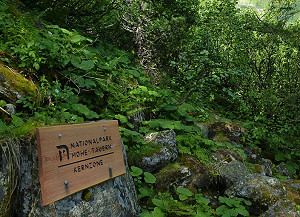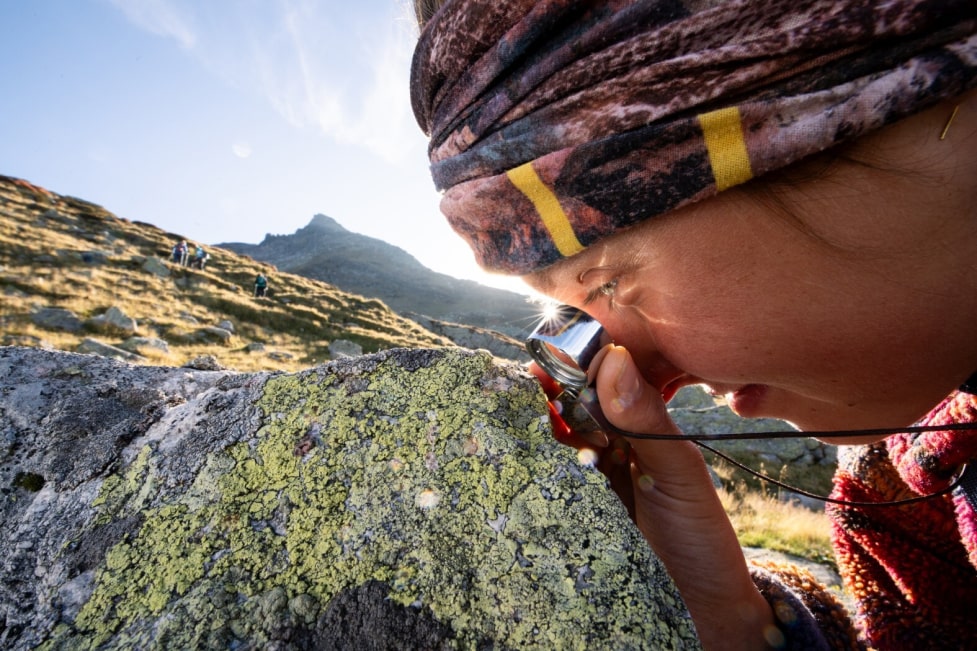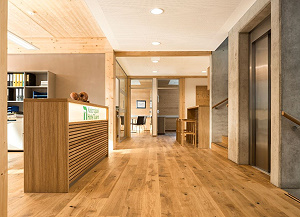The Science Center in Mittersill is part of a worldwide initiative. Its goal is to inspire the public, especially young people, about science and technology. Science centers are places of communication, where societal or scientific questions can be explored. Here, possible solutions can be developed and tested.
Interactive and informal learning is at the forefront. This allows children and adolescents to grasp scientific and technical phenomena quickly and easily.
The National Park Science Center Mittersill has two laboratory rooms for young researchers. Together with National Park rangers, the students explore life and climate in the high mountains or the geology of the Tauern Window. Exciting modules for everyone who enjoys experimenting!
In total, six different modules are available. Each module lasts approximately 2–4 teaching units:
Weather and Climate
(from grade 4)
Climate change is more pronounced in the high mountains than elsewhere. Glaciers are retreating, rockfalls make paths impassable, and the local flora and fauna are affected. Through exciting experiments on weather elements such as temperature, humidity, air pressure, föhn wind, and general wind, students learn how weather forms. The extreme climatic conditions in the high mountains are explained, as well as basic processes of global warming. In a mini CO₂ atmosphere, the greenhouse effect can even be measured in just a few minutes.
Water – Life in the River
(from grade 3)
Water is life. Every organism needs water to exist. In this module, students explore all facets of this precious element. They learn about different types of water and how water is distributed across the Earth. They also investigate the different states of water and explore the transitions from one state to another. To understand the water cycle, students follow the “journey” of a single water droplet. Numerous experiments with water are included in this module.
Geology – A Mountain is Born
(from grade 5)
To understand the formation of the Alps, and especially the Hohe Tauern, students first study the structure and history of the Earth. They travel back in time, learn about the former supercontinent Pangea, and understand terms such as “continental drift.” After examining the above- and below-ground processes that shape the Earth’s crust, they focus on the formation of the Alps. The unique tectonic feature of the region – the Tauern Window – is examined in detail. Through numerous experiments, students learn how the current landscape was shaped by various influences and how it continues to evolve. Finally, they explore mass movements and their impacts due to climate change.
Mineralogy – Minerals and Rocks
(from grade 5)
In this module, students study the materials that make up the Earth’s crust and later take an extensive look at the “treasure chamber” of the Hohe Tauern. To understand what a rock is made of, they break down granite into its mineral components: feldspar, quartz, and mica. They learn about different types of rocks and their formation. Using a “crystal lattice,” students understand how a mineral is structured, and under the microscope, they can even watch a crystal grow. Students explore the optical and mechanical properties of rocks, such as color, crystal shape, density, and fracture behavior. A highlight is making their own “rock chocolate” – purely for experimental fun.
Altitude Zones – Journey to the Arctic
(from grade 5)
In this module, students learn about the different climate zones between Central Europe and the North Pole and discover the similarities and differences with the altitude zones in the Hohe Tauern. They explore, in a playful way, which plants and animals occur in each vegetation zone and the conditions that prevail there. The module highlights the characteristics of climate zones from Central Europe to the North Pole and introduces key climatic data. A comparison is made with the altitude zones in the Hohe Tauern, examining how the landscape changes with increasing altitude.
Life in Extreme Conditions – Animals in the High Mountains
(from grade 3)
The high mountains are a habitat only for specialists! In this module, students learn about the special adaptation and survival strategies of alpine animals. They study different ways animals move and identify “climbers and tunnel builders.” Students explore the anatomical features that give each species unique abilities and adaptations. The module also examines the seasonal coloration of animals and explains the differences between winter rest, hibernation, and winter torpor. Students will likely be amazed at the clever tricks animals use to deceive predators and warn their peers.
















